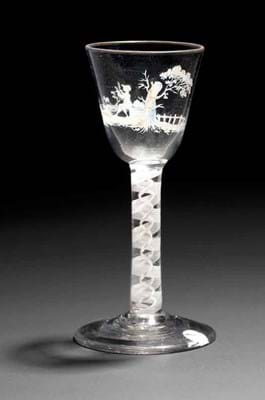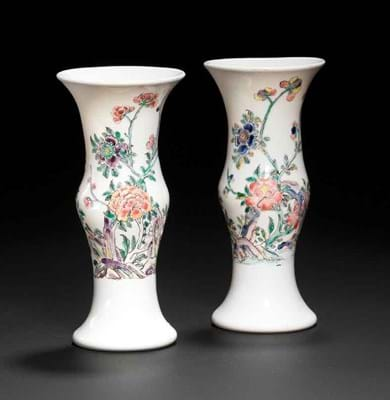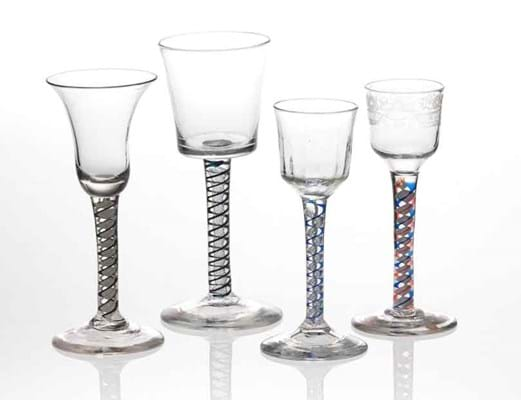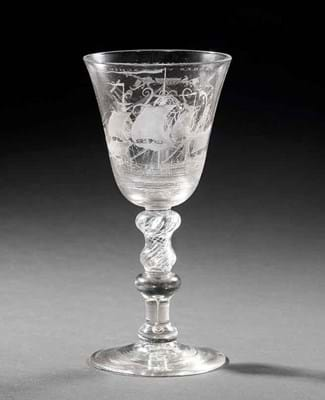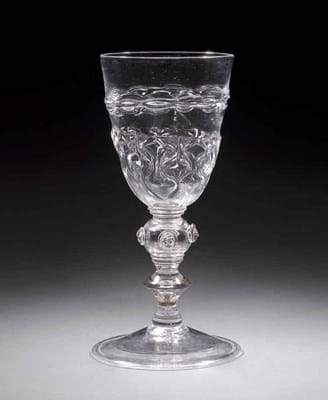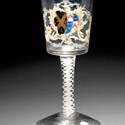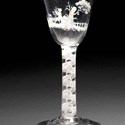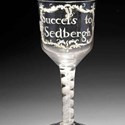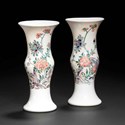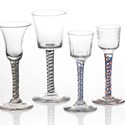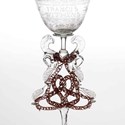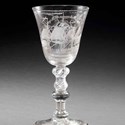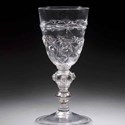Until two or three years ago Sotheby's filled that particular slot, but now the baton has passed, along with their erstwhile glass specialist Simon Cottle, to Bonhams Bond Street (20/12% buyer's premium).
Their 269-lot sale held on December 16 was a mix of English and Continental drinking glasses with an 80-lot afternoon session of 19th and 20th century paperweights. Although a various-owners mix, two core properties made up over a third of the content: the 60-lot Morton collection of paperweights and 50-odd lots comprising the first part of the collection of drinking glasses formed by Christopher Crabtree.
To this were added another 87 lots of mixed-owner English drinking glasses and around 50 lots of Continental glass: 16th and 17th century façon de Venise; 18th century Dutch engraved works; Biedermeier and a sprinkling of 19th century decorative glass.
Overall, with the immediate after-sales included, the auction chalked up just under £570,000 with selling rates of 75 per cent by volume and 88 by value. It was a pretty good result in what is a solid rather than volcanic market, especially given that some of the key material on offer was making a fairly swift return to the rostrum.
Crabtree Collection
This could be most easily observed in the Crabtree collection. Well known in the trade, Mr Crabtree has been a serious glass collector for four decades and a high-profile auction participant for the last decade or so, buying prominently in collectable sectors of the market, notably enamelled glasses by the Beilby group of decorators, often at top dollar prices.
A change of collecting direction has prompted him to sell his collection through Bonhams in two instalments.
Beilby, Jacobite glass, colour twists, opaque white glass candlesticks and some façon de Venise and Dutch-engraved Continental pieces made up the first offering.
Part two, with other glasswares, will be dispersed next year.
Splitting a collection is one way of ensuring that the market isn't flooded and it also gives both vendor and auctioneer an opportunity to test the waters and, if necessary, adjust expectations next time.
Bonhams' estimates were not automatically set to record a profit on Crabtree's recent purchases. But nor did they leave much in the way of a profit margin for the trade.
Fortunately there was a degree of flexibility in operation so, while the audience sometimes proved resistant at the auction, after-sales ensured that virtually everything had found a buyer a day or so later.
There were some trade participants, probably acting on commission, but Bonhams said much of the buying was collector-driven. And a substantial proportion went over the phone. A trade view was that the collection did quite well considering how recently it was put together and the present trading climate.
Mixed Results
There were certainly some strong individual prices, but with other lots Mr Crabtree will have at best broken even or made a loss.
Hasty resale was a particularly telling factor in a group of pieces outside the Crabtree collection where it was combined with very bullish expectations. Five 1770s facet stem engraved wine glasses offered here formed part of a set of 13 used by the Cycle Club, a Welsh Jacobite supporters association.
They were passed down by direct descent from one Robert Vaughan of North Wales until they sold at Tamlyn's in December 2008 for a total of £21,600.
Then the highest individual price was £2600. Just one year on, they now carried individual guides of £3500-4500 apiece.
Lack of freshness told, just one, engraved with the name of club member Philip Egerton, found a buyer, at £3000.
Baluster Goblet
But conversely Bonhams' sale also showed how much of a premium is attached to fresh rarities that please current collecting taste buds. Early on the sale featured an 11.5in (29cm) high baluster goblet of c.1690 that had been acquired by the vendor at a country house sale in Ireland.
Good balusters are currently much in demand and this was an early example of impressive size with the bonus of a gadrooned bowl 'nipt diamond waies' over a hollow ball knop applied with four putto heads. These last were an unusual and attractive touch, the raspberry prunts associated with continental glass being a more common motif. It was enough to send the bidding to £30,000, over double the £10,000-15,000 estimate, before it fell to a telephone bidder.
Continental Glass
The Continental section majored on areas that are currently strong: Venetian and façon de Venise and Dutch engraved glass, eschewing the German and middle European material that has been struggling of late.
Dutch glass is on something of a roll, with interest from the UK and Holland, and it provided the highest Continental price in this event in the form of a c.1770, 9in (23cm) high goblet. There were multiple attractions to this piece: the fine three-masted sailing ship named Holland with the VOC insignia of the Dutch East India Company, and an elaborate monogram to the other side. Although unsigned, the style of engraving was stylistically attributed to the well-regarded Dutch artist Jacob Sang. It realised £22,000.
The stickiest section was the group of Biedermeier enamelled glasswares, a collecting field where demand has fallen from its peak a decade or so ago. The afternoon paperweights session proved less solid, although the Morton material performed markedly better than the mixed-owner pieces that followed.


